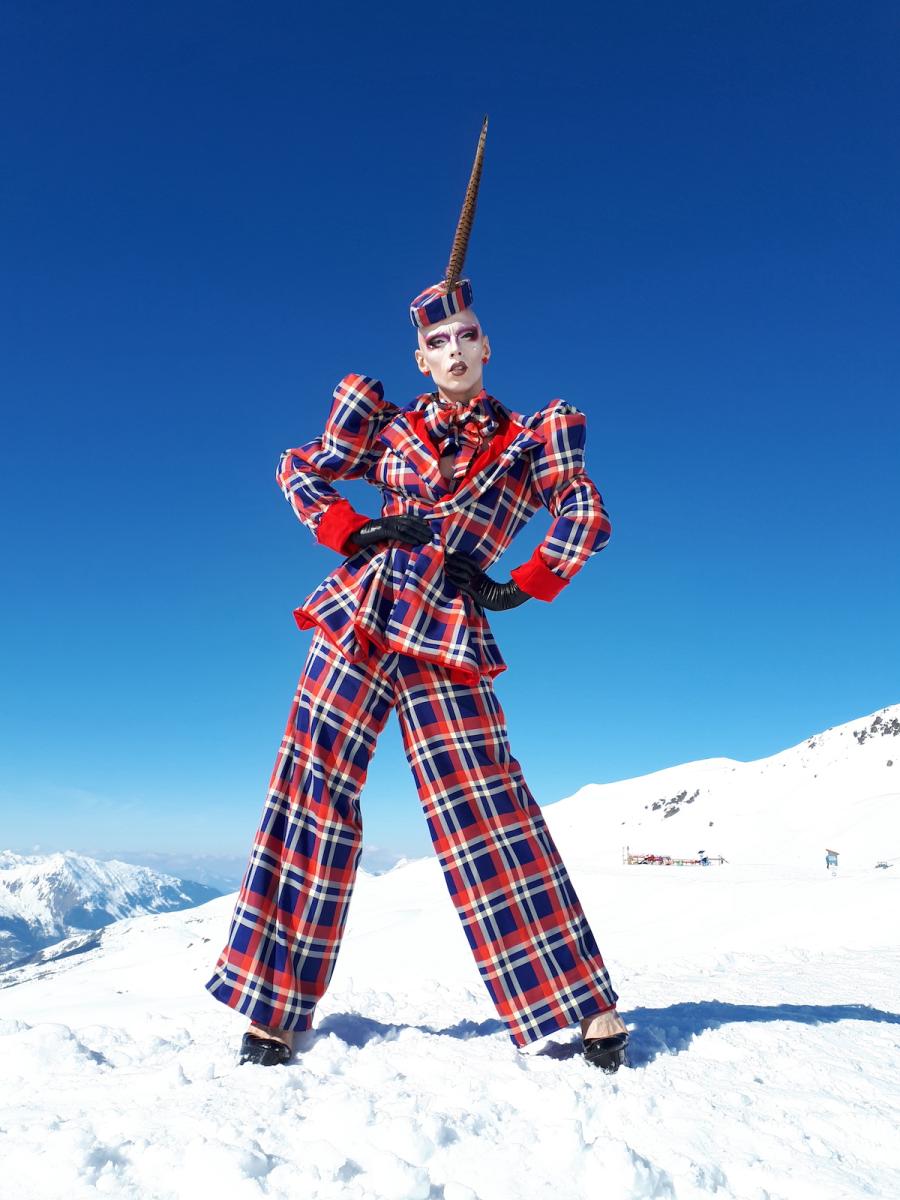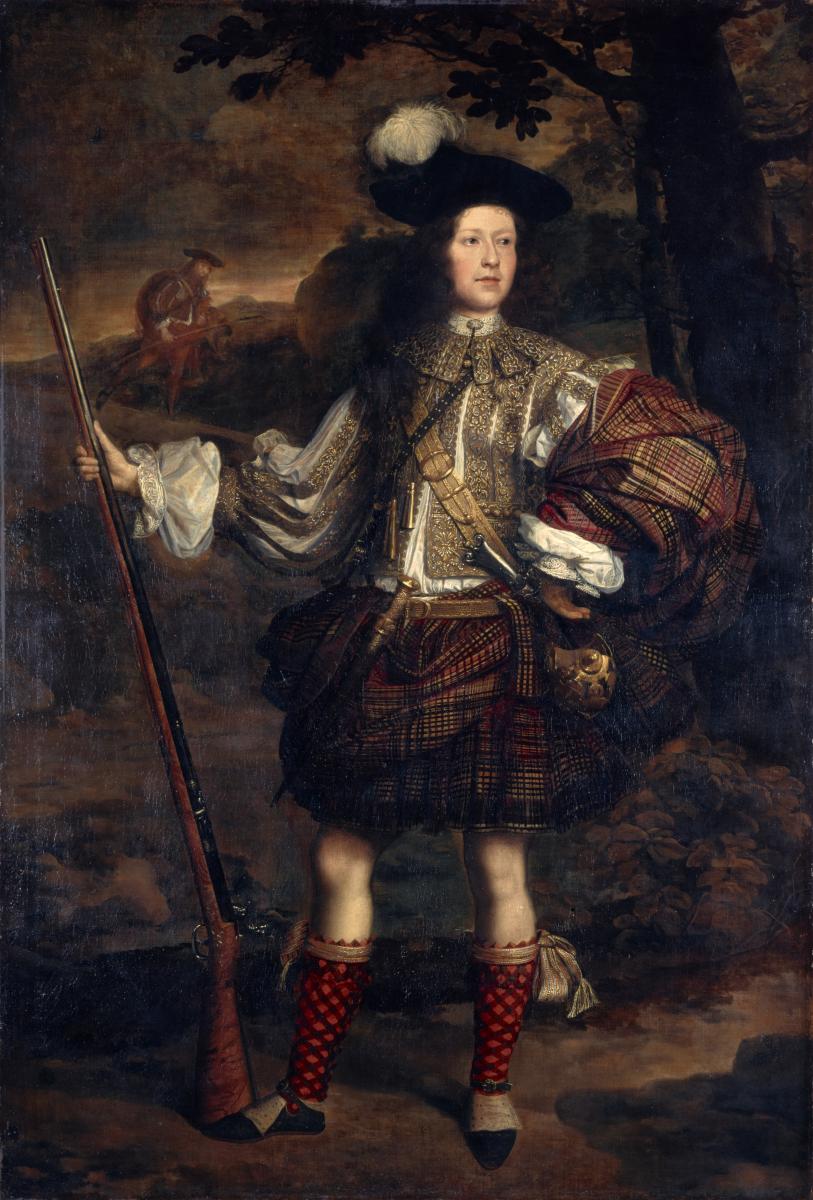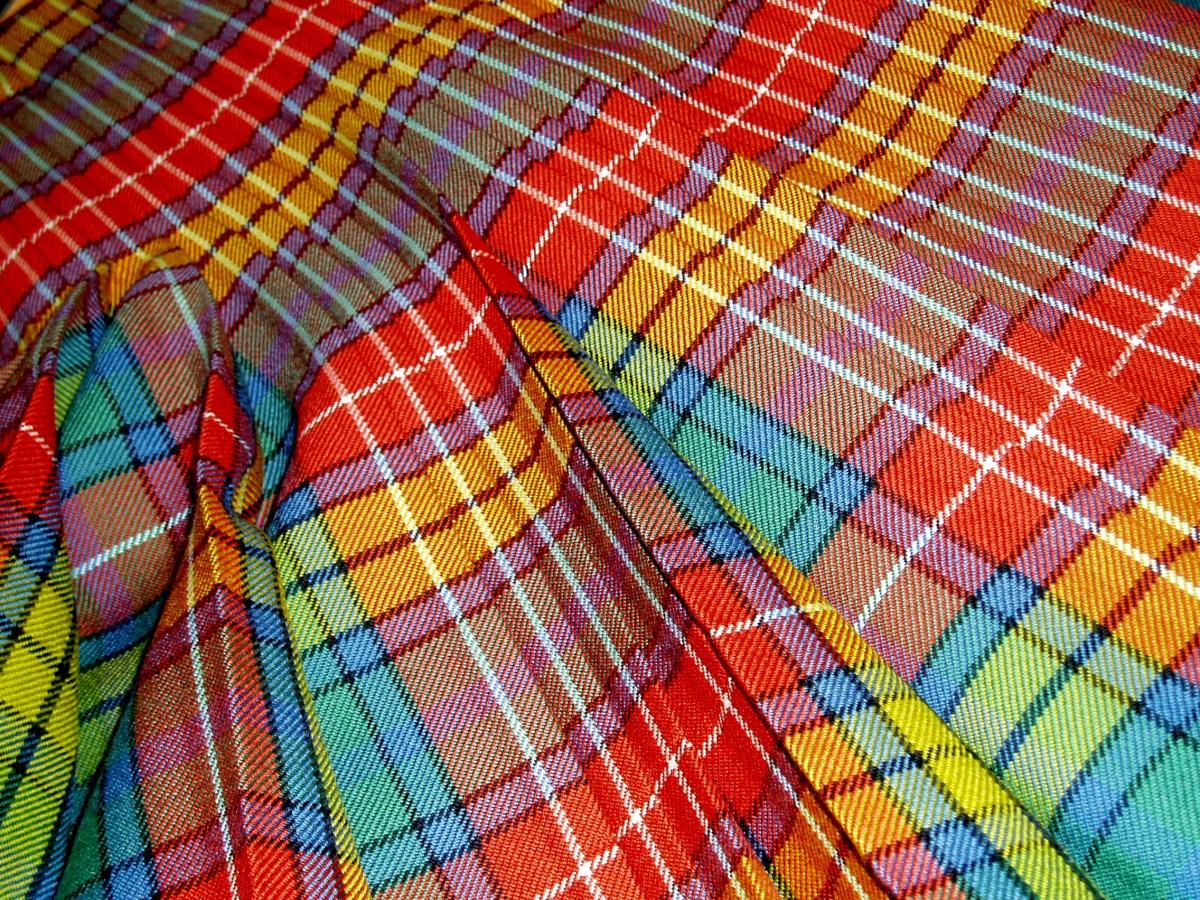This wonderful Cornish workshop and museum is dedicated to the legacy of studio pottery trailblazer Bernard Leach
Tartan – the power pattern
Tartan – the power pattern
5 Apr 2023
From punks in ripped check trousers to royals clad in kilts, tartan can signify anything from tradition to rebellion, status to repression. It is one of the world’s best-known fabrics, yet there is simplicity in its making. It is usually woven as a twill weave, crossing the weft threads over and under multiple warp threads; but this is the starting point for myriad patterns – or, as they are known, ‘setts’.
‘Tartan is also capable,’ says Jonathan Faiers, professor of fashion thinking, author of Tartan and consultant curator of the upcoming exhibition of the same name at V&A Dundee, ‘of staggering complexity. Above all it is a textile of contradiction.’
 Drag performer Cheddar Gorgeous in a tartan suit by Liquorice Black, 2017. Image: © Cheddar Gorgeous
Drag performer Cheddar Gorgeous in a tartan suit by Liquorice Black, 2017. Image: © Cheddar Gorgeous
Tartan is catnip to fashion
That exciting potential has made tartan irresistible for fashion designers past and present, from the conventional to the anarchic.
The latter was particularly seen in the 1970s, with an influx of countercultural tartan, epitomised by designs such as Malcolm McLaren’s ‘bondage’ kilt at SEX, the boutique he shared with Vivienne Westwood.
Elsewhere, tartan’s countercultural appeal continues to resonate. Drag queen Cheddar Gorgeous has appeared in a loudly checked custom couture suit by Liquorice Black; Charles Jeffrey, the Glaswegian creative director, fashion designer and master of high camp, has returned to tartan time and again. For his Autumn/Winter 2023 Collection, designer Nicholas Daley added a tartan intended to draw together his dual Jamaican and Scottish roots to the official Register of Tartans, using colours designed to represent both sides of his heritage.

Lord Mungo Murray (Am Morair Mungo Moireach) 1668–1700, son of the 1st Marquess of Atholl, by John Michael Wright, c.1683. Image: National Galleries of Scotland/Scottish National Portrait Gallery
Tartan and politics
Political messaging is part and parcel of the history of tartan.
It has been used as propaganda from the 18th century onwards, when Jacobite sympathisers wore tartans to signal support for exiled Stuart king James II. Though his eldest son, Charles, had spent his entire life in Italy, from 1740 he made sure to wear a tartan suit around Rome.
After the rebellion was quashed, the English forbade the wearing of Highland dress in 1746, considering it a sign of anti-government sympathies. It wasn’t until Queen Victoria began her love affair with Scotland that tartan gained its establishment credentials.
This symbolic messaging continues today.
When Britain’s then prime minister Theresa May wore a Vivienne Westwood ‘Anglomania’ suit in Black Watch tartan first to launch her leadership bid, and then again to confirm Brexit, she was signalling her commitment to the union. Likewise, when Nicola Sturgeon wore Slanj Kilts’ Homeless tartan face mask during the Covid pandemic – sales of which raised money for a homelessness charity – she was signalling her values to the public.
Tartans’ use to express identity is, of course, far from new. Portraiture from the 18th and 19th centuries abounds with its symbolic affiliations. A grand painting of Lord Mungo Murray (1668–1700) shows the young aristocrat clad in both fashionable doublet and traditional Highland costume: a plaid of five metres long is belted around his body to form both kilt and cloak. The pairing combines dual aspects of his identity, marrying cosmopolitanism with home-grown pride.
 A kilt under construction, Keith Kilt and Textile Centre. Image: Jonathan Faiers
A kilt under construction, Keith Kilt and Textile Centre. Image: Jonathan Faiers
Myths and dyes
The curators of Tartan at V&A Dundee explore the multifaceted nature of tartan through 300 objects spanning everything from architecture to product design, high art to high-street fashion.
Among the heterogeneous objects on display are a Scotch tape dispenser, cheerfully chequered car upholstery and 1960s architectural plans by the Dutch architect Dom Hans van der Laan. In tartan, van der Laan saw a prototype grid structure that offered a vision for the urban fabric. Elsewhere, we see artist Edward Bawden apply this grid to decorative effect, using it in linocut wrapping paper designs decorated with bagpipe players from 1960.
In 2025, that same grid will form the basis for a new garden at V&A Dundee, created with the Eden Project. This will feature plants used for dyeing yarns before the 19th-century advent of aniline dyes, from ragweed (to create orange) and dandelion (magenta) to sloe (blue-black) and rock lichen (red).
‘Pre-1820, most tartans were “district tartans” based on the natural resources available nearby,’ explains V&A Dundee curator Kirsty Hassard. The notion of ancient ‘clan tartans’ – tartans belonging to a family name – was a sales pitch by 18th-century commercial weavers. This concept, which appeals both to national and familial loyalties, has had extraordinarily successful afterlife; it endures today.
This popular myth is just one of many misconceptions surrounding tartan. These span everything from the reason for red kilts – that red hid bloodstains best during battle – to the uniquely Scottish nature of the textile. In fact, no single culture can claim to have invented the checked fabric, which has emerged independently everywhere from Maori New Zealand, India and China over the past 5,000 years. This is perhaps unsurprising, given that a grid is the second-easiest pattern (behind stripes) to weave.
See
Tartan
V&A Dundee
Until 14 January 2024
Find out more
Read our whole feature in the latest issue of The Arts Society Magazine, out now and available exclusively to members and supporters of The Arts Society (to join, see theartssociety.org/member-benefits).
About the author
Isabella Smith is a writer with a special interest in art and craft
About the Author
Isabella Smith
Isabella Smith is a writer with a special interest in art and craft
JOIN OUR MAILING LIST
Become an instant expert!
Find out more about the arts by becoming a Supporter of The Arts Society.
For just £20 a year you will receive invitations to exclusive member events and courses, special offers and concessions, our regular newsletter and our beautiful arts magazine, full of news, views, events and artist profiles.
FIND YOUR NEAREST SOCIETY
MORE FEATURES
Ever wanted to write a crime novel? As Britain’s annual crime writing festival opens, we uncover some top leads
It’s just 10 days until the Summer Olympic Games open in Paris. To mark the moment, Simon Inglis reveals how art and design play a key part in this, the world’s most spectacular multi-sport competition



